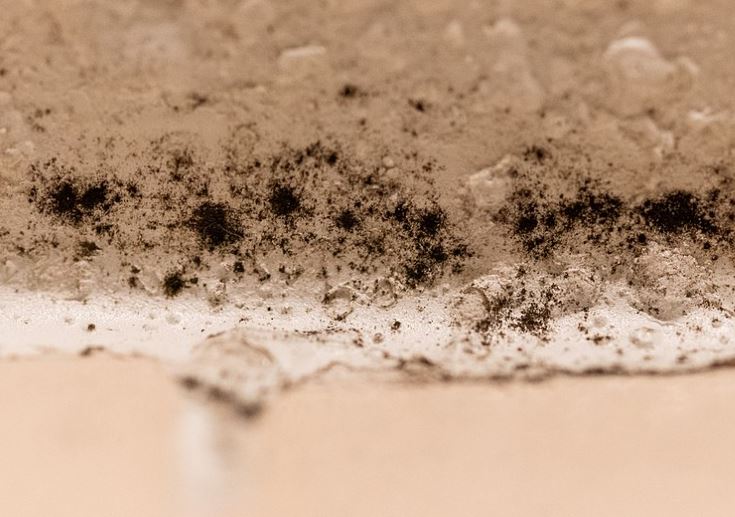As per moldandenvironmental.com, the smell of mold can be earthy and musty. Also, if you are getting signs of mold and it is not visible to the naked eye then you can call a mold inspector to recognize it.
If you find yourself in an uncomfortable and unfamiliar situation of musty aromas, it could suggest that unwelcome house guests have moved into your home mold. Usually brought on by a flood or leak, this pesky intruder can leave behind unpleasant odors for homeowners to deal with.
It’s easy to detect the musty smell of mold, but distinguishing it from other common household smells can be difficult. Knowing whether you have a potential toxic problem on your hands or just some forgotten laundry is essential for keeping yourself and your family safe so don’t wait until there are visible signs.
With the potential to cause health risks, it’s important that you’re able to distinguish a moldy odor from any other common smells in your home. In this article, we’ll explore what sets these particular aromas apart so you can ensure everyone stays safe and healthy.
What Is The Reason Behind The Smell of Mold?
The unmistakable odor produced by mold can be attributed to the gaseous chemicals released as a result of its growth and spread. Developing an understanding of this process helps us recognize what we’re smelling, giving us insight into how best to prevent it from taking hold in our environment.
There’s more in the air than meets the nose. Microbial Volatile Organic Compounds (mVOCs) are compounds that can add a plethora of smells to our environment, from pungent and metallic aromas to sweet scents.
Many mVOCs have been identified including Aldehydes such as starchy, waxy, or sweet odors; Benzenes which offer up an aroma similar to gasoline; and Toluenes with physical reminders of paint thinners or paint just waiting for us to breathe it all in.
Microbial Volatile Organic Compounds (mVOCs) can produce a wide range of odors, from pungent and metallic to sweet and fruity. Over 200 mVOC compounds have been identified so far, such as Aldehydes with their starchy or waxy scent; Benzenes that smell like gasoline; and Toluenes that give off paint-like aromas.
Ethanol resembling the fragrance of hand sanitizer; Ketones reminiscent of nail polish remover or overripe fruitiness; Esters boasting fragrances akin to ripe bananas; Carboxylic Acids evoking sourness sometimes bordering on rancidity; Lactones exuding milky creaminess in certain cases accompanied by sweetness tinges.
Terpenes manifesting citrusy perfumes up through cheesy jeers all the way into skunk Dom. On top of sulfur & nitrogen compounds add putrid scents ranging from rotten eggs to ammonia.
The complex nature of mold’s volatile organic compounds (mVOCs) makes its scent hard to identify with certainty since the chemical makeup can change based on species and life cycle. But if your home is filled with a suspicious smell, there are several tell-tale warning signs that it could be due to harmful levels of mold growth.
Can You Describe The Smell Of Mold?
The presence of mold can cause more than just physical harm; its truly distinctive odor is unmistakable and has been described as a combination of musty, stale earthiness with undertones reminiscent of wet socks or rotting wood.
Dampness, sour tangs similar to sweat after exercise, fermenting aromas akin to aged cheese, and decaying fruit are also common scents associated with the unwelcome visitor that often appears in homes where humidity levels are not sufficiently monitored.
Odors have the remarkable power to conjure up memories and feelings, most often of unpleasantness. That’s why it’s no surprise that mold emits an unmistakably foul scent from stale mustiness created by a peculiar blend of microbial volatile organic compounds (mVOCs). The pungency intensifies with time as the fungi sporulate and spread throughout its environment.
Moisture or humidity are the essential components of an environment that breeds mVOCs, giving your home a musty smell. But these volatile organic compounds can also bring other olfactory sensations with them earthiness, rotting, and sourness to name but three.
The presence of mold is almost guaranteed in damp conditions; so if you notice hints of humidity lingering around your house, it could be masking more pungent aromas than just rainwater.
Mold growth not only has a detrimental effect on the aesthetics of your home but can also lead to more serious issues such as material decay. A range of organic surfaces like wood paneling, drywall, and fabrics present ideal breeding grounds for this unwelcome guest.
Household mold can range from subtle to severe, with a vast spectrum of odors. In its worst form, it amplifies the smell of rot and decay, reminiscent of fermenting cheese or damp wood in need of repair. For those who experience persistent water damage such as floods or leaking pipes be aware that beyond structural issues comes an unsettling aroma.
How To Get Rid Of Household Odors That Resemble The Smell Of Mold?
From the musty smell of mold to other pungent aromas, strange odors in your home can be caused by a variety of sources. Despite being the most common culprit, indoor air quality issues don’t always have to involve mold; there may well be another suspect behind those unusual smells. Investigate further with these possible household offenders.
Unpleasant odors coming from your residence could signify an array of different issues, such as improperly stored laundry, garbage in the kitchen and bathrooms, spoiled food left unattended in the fridge or dishwasher, pet messes that need to be cleaned up quickly, and various pest infestations.
It is critical to consider if there are any gas leaks present due to HVAC breakdowns or sewage backup before attempting further investigation into possible causes.
Interesting Related Article: “What You Need to Know About Mold Assessment and Prevention in Your Home“


